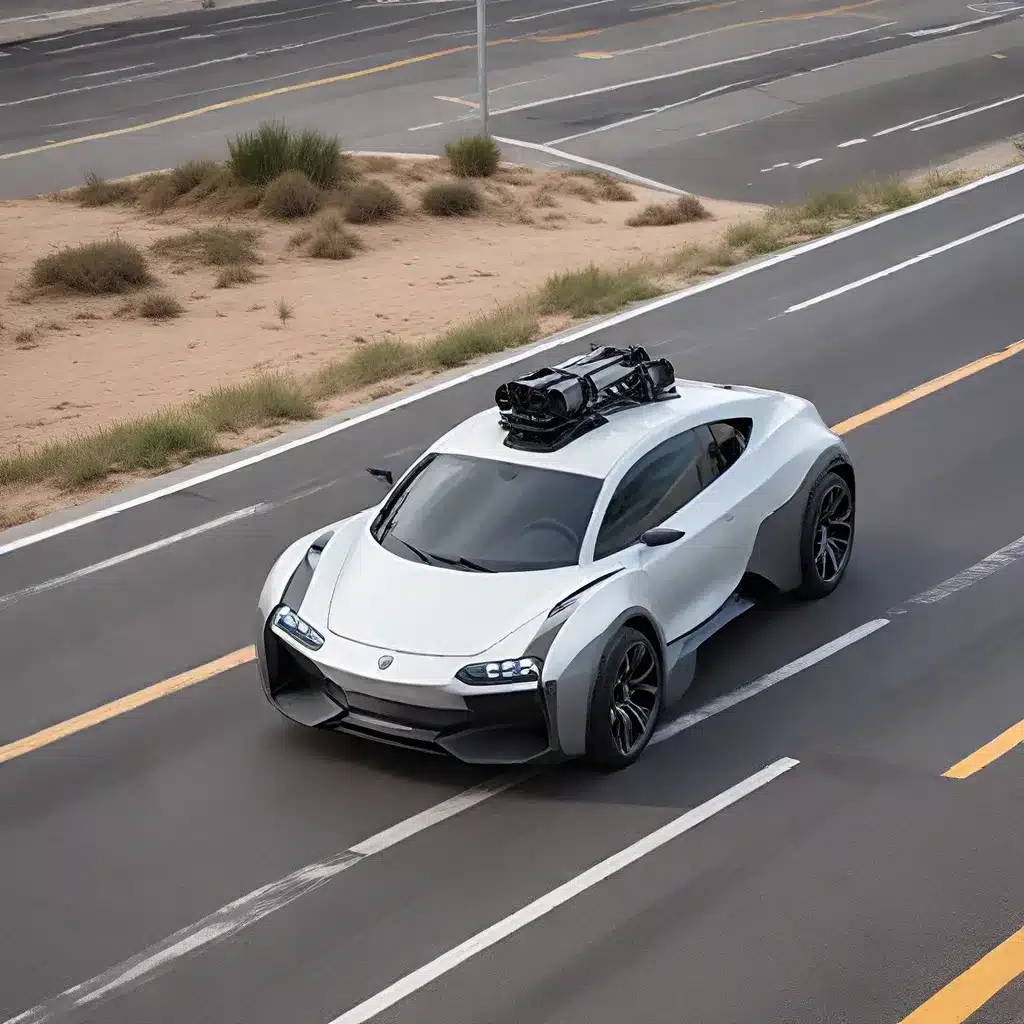
As the world moves towards greater automation and digitalization, the role of sensor networks and the Internet of Things (IoT) has become increasingly integral to the development of advanced robotic systems and unmanned vehicles. These sensor-powered autonomous systems are at the forefront of technological innovation, revolutionizing industries such as manufacturing, transportation, and beyond.
The Rise of Sensor Networks in Robotics
At the heart of this transformation lies the sensor network, a critical component that enables the collection, processing, and communication of vast amounts of data. These networks, comprising a multitude of interconnected sensors, are the backbone of modern robotics and unmanned vehicles, providing the sensory inputs necessary for real-time decision-making and adaptive behavior.
Sensor networks have evolved to become more sophisticated, with advanced capabilities in areas such as precision measurement, environmental monitoring, and object detection. The integration of these sensor networks with robotic and autonomous systems has unlocked new possibilities, empowering machines to perceive their surroundings, navigate complex environments, and interact with their physical world in unprecedented ways.
One key application of sensor networks in robotics is the development of autonomous mobile robots (AMRs) and automatic guided vehicles (AGVs). These systems leverage a network of sensors, including laser scanners, ultrasonic sensors, and vision cameras, to navigate through their environment, avoid obstacles, and optimize their movement patterns. This enhanced perception and decision-making capabilities have revolutionized material handling, logistics, and warehouse automation, enabling greater efficiency and productivity.
Sensor-Powered Unmanned Vehicles
Beyond mobile robots, sensor networks have also been instrumental in the advancement of unmanned aerial vehicles (UAVs) and unmanned ground vehicles (UGVs). These autonomous systems, often referred to as drones or unmanned vehicles, are equipped with a diverse array of sensors that enable them to perform a wide range of tasks, from aerial surveillance and mapping to search and rescue operations.
Sensor-powered unmanned vehicles are increasingly being deployed in industries such as agriculture, construction, and emergency response, where their ability to navigate challenging terrain, capture high-resolution data, and operate in hazardous environments has proven invaluable. The integration of LiDAR (Light Detection and Ranging) sensors, thermal cameras, and multispectral imaging capabilities has expanded the capabilities of these unmanned systems, enabling them to gather rich, multidimensional data that informs critical decision-making.
Advancements in Sensor Network Design
As the demand for more sophisticated and versatile autonomous systems continues to grow, the design and development of sensor networks have become increasingly complex. Engineers and researchers are exploring various network topologies, communication protocols, and power management strategies to optimize the performance and efficiency of these systems.
One prominent area of advancement is the Wireless Sensor Networks (WSNs), which leverage radio frequency (RF) or low-power wireless technologies to enable seamless communication and data exchange between sensors. These decentralized, self-organizing networks offer greater flexibility, scalability, and resilience compared to traditional wired sensor networks, making them well-suited for a wide range of IoT applications.
In addition to network design, the development of energy-efficient sensors and advanced power management techniques has become a critical focus in the field of sensor networks. Maximizing the operational lifespan of these systems, particularly in remote or hard-to-reach environments, is essential for ensuring the long-term viability and reliability of sensor-powered autonomous systems.
Securing Sensor Networks and IoT Ecosystems
As sensor networks and IoT-enabled devices become ubiquitous, the importance of cybersecurity has become paramount. Sensor-powered autonomous systems, by their very nature, collect and transmit vast amounts of sensitive data, making them prime targets for cyber threats such as hacking, data breaches, and malware attacks.
To address these security challenges, researchers and industry professionals are exploring various security protocols, encryption algorithms, and access control mechanisms to safeguard sensor networks and IoT ecosystems. The adoption of industry-standard security practices, secure firmware updates, and end-to-end encryption has become crucial in ensuring the confidentiality, integrity, and availability of sensor data.
Furthermore, the integration of advanced authentication methods, such as biometric recognition and multi-factor authentication, can help prevent unauthorized access to sensor-powered autonomous systems, thereby mitigating the risk of malicious tampering or unauthorized control.
The Future of Sensor-Powered Autonomous Systems
As the Internet of Things continues to evolve and expand, the role of sensor networks in driving the development of advanced robotic systems and unmanned vehicles is poised to grow exponentially. The sensor network industry is witnessing a surge of innovation, with researchers and engineers pushing the boundaries of what is possible in terms of precision, reliability, and energy efficiency.
The future of sensor-powered autonomous systems promises to be both exciting and transformative. From precision agriculture and smart city infrastructure to autonomous transportation and disaster response, these sensor-driven technologies will play a pivotal role in shaping the way we interact with and navigate our physical world.
As we look ahead, the continued advancements in artificial intelligence, machine learning, and edge computing will further enhance the capabilities of sensor-powered autonomous systems, empowering them to make increasingly sophisticated decisions, adapt to dynamic environments, and collaborate seamlessly with humans.
The journey towards a sensor-driven, IoT-enabled future is well underway, and the impact of these technologies on our lives, industries, and the very fabric of our society is poised to be profound and far-reaching.